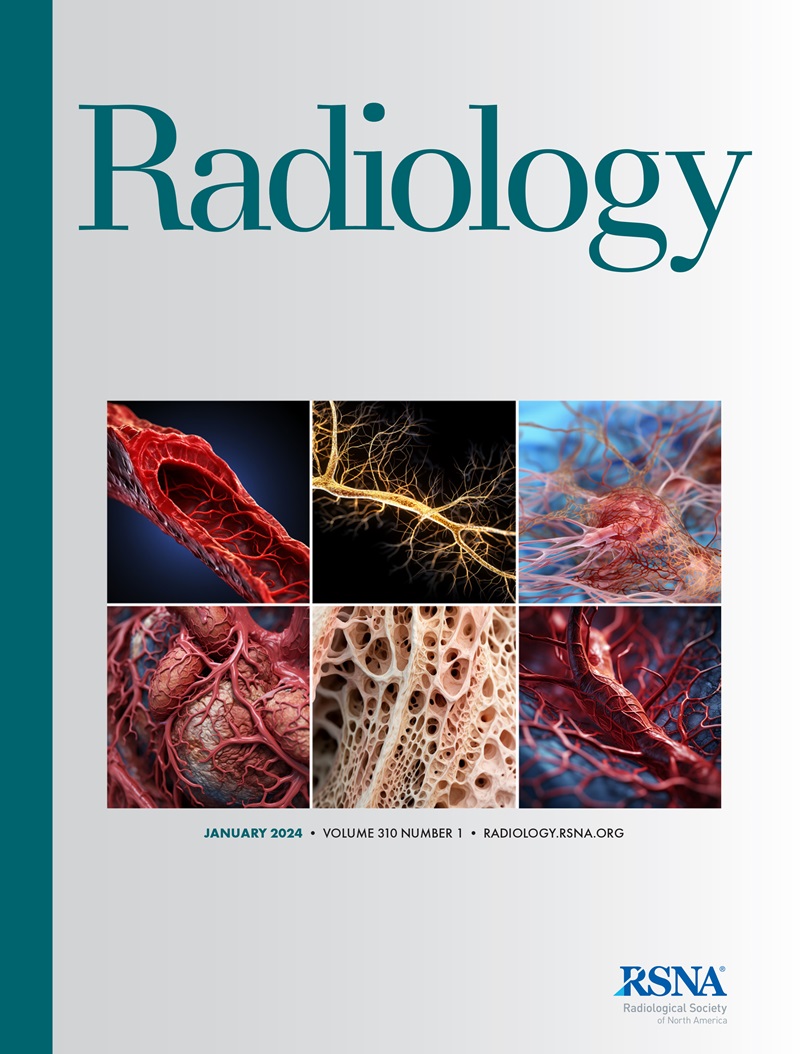全科放射人工智能的财务、操作和临床优势。
IF 15.2
1区 医学
Q1 RADIOLOGY, NUCLEAR MEDICINE & MEDICAL IMAGING
引用次数: 0
摘要
尽管美国食品和药物管理局(fda)批准的用于放射学的人工智能(AI)和机器学习医疗设备快速增长,但目前的工具范围仍然有限,通常专注于狭窄的任务,缺乏全面协助放射科医生的能力。这些狭隘的人工智能解决方案在财务可持续性、运营效率和临床实用性方面面临限制,阻碍了广泛采用并限制了它们在放射学实践中的长期价值。生成式和多模态人工智能的最新进展扩大了图像解释的范围,引发了对多能医学人工智能发展的讨论。在此背景下,本文提出了全科放射学人工智能(GRAI)的概念,并介绍了其实施的关键特征。GRAI旨在(a)根据阳性诊断创建报告,(b)根据正常研究的适应症定制报告,(c)将结果与先前成像进行比较,(d)结合患者特征,以及(e)提供不确定性信息,交互式建议。通过巩固图像解释和扩大患者情况的结合,GRAI有可能克服狭隘的人工智能解决方案的局限性,提高财务可持续性,简化操作效率,提高临床效用。在这些提出的功能的基础上,适当发展GRAI对于充分发挥AI在放射学中的潜力,提高诊断性能,同时减轻放射科医生的临床负担至关重要。本文章由计算机程序翻译,如有差异,请以英文原文为准。
The Financial, Operational, and Clinical Advantages of Generalist Radiology AI.
Despite the rapid growth of Food and Drug Administration-cleared artificial intelligence (AI)- and machine learning-enabled medical devices for use in radiology, current tools remain limited in scope, often focusing on narrow tasks and lacking the ability to comprehensively assist radiologists. These narrow AI solutions face limitations in financial sustainability, operational efficiency, and clinical utility, hindering widespread adoption and constraining their long-term value in radiology practice. Recent advances in generative and multimodal AI have expanded the scope of image interpretation, prompting discussions on the development of generalist medical AI. In this context, this review proposes the concept of generalist radiology AI (GRAI) and introduces key features for its implementation. GRAI aims to (a) create reports based on positive diagnoses, (b) tailor reports to indications for normal studies, (c) compare findings with prior imaging, (d) incorporate patient characteristics, and (e) provide uncertainty-informed, interactive recommendations. By consolidating image interpretation and expanding the incorporation of patient context, GRAI has the potential to overcome the limitations of narrow AI solutions, improve financial sustainability, streamline operational efficiency, and enhance clinical utility. Appropriate development of GRAI, building on these proposed features, is crucial for realizing the full potential of AI in radiology and enhancing diagnostic performance while reducing the clinical burden on radiologists.
求助全文
通过发布文献求助,成功后即可免费获取论文全文。
去求助
来源期刊

Radiology
医学-核医学
CiteScore
35.20
自引率
3.00%
发文量
596
审稿时长
3.6 months
期刊介绍:
Published regularly since 1923 by the Radiological Society of North America (RSNA), Radiology has long been recognized as the authoritative reference for the most current, clinically relevant and highest quality research in the field of radiology. Each month the journal publishes approximately 240 pages of peer-reviewed original research, authoritative reviews, well-balanced commentary on significant articles, and expert opinion on new techniques and technologies.
Radiology publishes cutting edge and impactful imaging research articles in radiology and medical imaging in order to help improve human health.
 求助内容:
求助内容: 应助结果提醒方式:
应助结果提醒方式:


